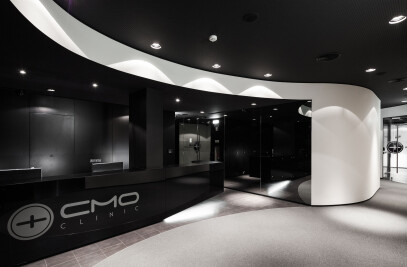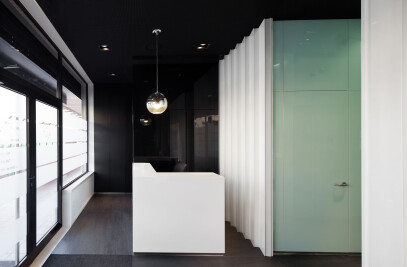Biogen is one of the world’s oldest Biotechnology companies and a pioneer in Neurosciences.
Pedra Silva Arquitetos developed their Lisbon offices in 2016 but the expansion of the team in 2020, together with new office needs, required the redesigning of an office space that would encompass the number of staff and meeting spaces.
The office comprises two levels with two distinct programs. The first level includes a public space with meeting pods for visitors, an auditorium, a kitchen, and a terrace. The second level was designed with the Lisbon team in mind and comprised an open-space office, informal pods for meetings and teleconferences, and a quiet room. The client’s request to move the meeting rooms to the level below was to increase the number of workstations in the open space.
The main project challenge was to rethink the space concept while using the existing elements and the slightest alterations possible, thus resulting in a dynamic, coherent, and solemn space. Our first objective was the introduction of colour based on the corporate image to evoke the idea of belonging from staff and visitors.
On the upper level, where workstations are located, the previous project had demarcated 3 distinct areas: an open space, a central component of meeting rooms, and a lounge. The central component boasted a mobile panel featuring art-inspired molecular structures that divided the open space from meeting rooms. These panels were intended to provide privacy to meetings. The redesign of the space meant eliminating the lounge and relocating two meeting pods to the lower level and increasing the number of workstations in the open space. This resulted in an area comprising existing meeting rooms and living space, enhanced by its materiality and colour. The area is not only defined by colour and materiality but also by its curved glass partitions, resulting in a dynamic space and art-inspired molecular structure graphics.
The main alteration of the lower level compared to the previous project is the reception area, with the repositioning of the meeting pods on the upper floor. These rooms were created on the same basis as the upper floor, paying close and thoughtful attention to materiality and colour, and divided by glass partition panels.
When comparing both projects, one can see that the influence and interpretation of molecular structures were represented differently. The first project emphasised artistic interventions in physical elements, whilst the second values transparency and natural lighting between spaces, resulting in visual graphic interventions.






















































